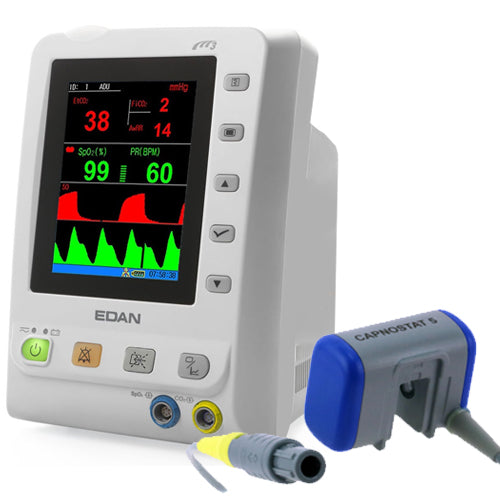In the modern healthcare arena, where patient safety is paramount, adopting advanced monitoring techniques is no longer optional; it's essential. Capnography monitoring has emerged as a cornerstone in anesthesia and critical care, providing real-time insights into a patient's respiratory status and empowering healthcare professionals to make informed decisions promptly.
If your practice involves anesthesia or managing critically ill patients, understanding and integrating capnography monitoring can significantly elevate the level of care you provide.
What is Capnography Monitoring?
Capnography involves the non-invasive measurement and display of carbon dioxide (CO2) in a patient's exhaled breath. This measurement, known as end-tidal CO2 (EtCO2), offers a window into the patient's respiratory function, reflecting the effectiveness of ventilation, lung perfusion, and metabolic processes.
Benefits in Anesthesia
- Ensuring Proper Endotracheal Tube Placement:Capnography is the gold standard for confirming correct endotracheal tube placement during anesthesia induction. By detecting the presence of CO2 in exhaled breath, clinicians can immediately verify that the tube is in the trachea and not the esophagus, preventing potentially life-threatening complications.
- Real-time Ventilation Assessment:Continuous capnography provides instant feedback on the adequacy of ventilation. Changes in EtCO2 can signal hypoventilation, hyperventilation, or airway obstruction, allowing for immediate adjustments to ventilator settings or airway management techniques.
- Assessing Depth of Anesthesia:Capnography can help anesthesiologists gauge the depth of anesthesia, ensuring the patient remains adequately sedated while minimizing the risk of over-sedation. This contributes to smoother anesthetic induction and emergence, enhancing patient safety and comfort.
Benefits in Critical Care
- Early Detection of Respiratory Distress:Changes in EtCO2 can be an early indicator of respiratory compromise, even before other vital signs show significant changes. This early warning system allows critical care teams to intervene promptly, potentially preventing respiratory failure or cardiac arrest.
- Monitoring Cardiac Output:EtCO2 levels can reflect changes in cardiac output, providing valuable information about the patient's cardiovascular status. This is particularly crucial in critically ill patients where hemodynamic stability is essential.
- Guiding Resuscitation Efforts:During CPR, capnography helps assess the effectiveness of chest compressions and ventilation. Real-time feedback on EtCO2 levels allows healthcare providers to optimize CPR techniques and improve the chances of successful resuscitation.
Why Capnography Monitoring is Essential for Your Practice

By providing continuous respiratory monitoring, capnography helps minimize the risk of adverse events associated with respiratory compromise, including hypoventilation, hypercapnia, and unintended esophageal intubation.
Capnography also streamlines clinical workflows by providing immediate feedback on respiratory status. This can reduce the need for frequent arterial blood gas analysis, saving time and resources.
Where to Find Reliable Capnography Monitoring Equipment
At MedLabAmerica.com, we're a trusted medical equipment retailer. We offer a wide selection of high-quality capnography monitors and other essential medical devices.
We also provide laboratory equipment and supplies, physical therapy and rehab equipment, vital signs monitors, and more.

